(单词翻译:单击)
If you can believe emojis, Russians are incredibly romantic... and perpetually cold. Our friends Down Under live in a land of indulgence. And the world as a whole is a generally happy place.
从表情符号的使用来看,俄罗斯人浪漫得不可思议,但同时也总是那么高冷;澳大利亚人生活得放荡不羁;而大体上,我们的世界还算得上是一个快乐的地方。
A new study by mobile communications company Swiftkey analyzes more than a billion pieces of data to get to understand the planet's love of emojis. The aptly titled Emoji Report provides a revealing look into Android and iOS users' texting habits. All of the emojis -- there are more than 800 -- were organized into 60 categories and then ranked from most to least popular.
移动通讯公司Swiftkey分析了超过10亿份数据,以便了解各国人使用表情符号的偏好。此次的研究结果《表情符号报告》,调查、展示了安卓和苹果用户发短信的习惯。所有的表情符号(有超过800个)被分为60类,按照受欢迎的程度进行排名。
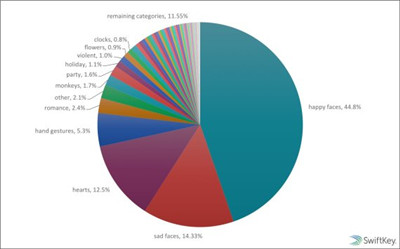
Thankfully, people everywhere use far more happy faces than sad ones.
令人欣慰的是,世界各地的人们用笑脸的次数远远多于哭脸。
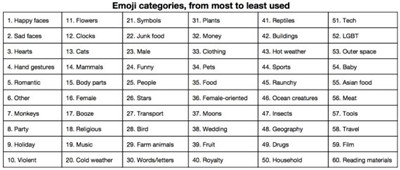
The statistics reveal some entertaining facts about localized emoji use. Canadians, for example, are fans of quite a few symbols more commonly associated with America -- including violent emojis, such as guns, and those researchers said indicated raunchy humor, such as the banana and peach.
在本地化表情符号的使用方面,此次数据揭示出了一些有趣的事实。例如,加拿大人更喜欢使用几个暴力的符号,比如手枪,通常来说,美国人使用这些符号更为频繁。加拿大人还喜欢使用香蕉、桃子一类的符号,研究人员认为这些符号代表着一种粗俗的幽默。
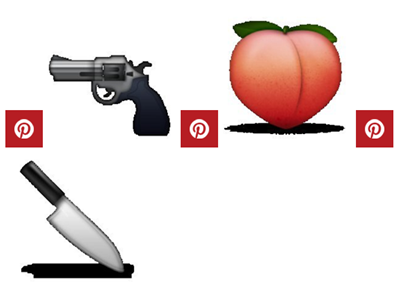
Australians apparently live quite a good life, as they use the most symbols indicating alcohol (twice the worldwide average), drugs (70 percent above average), holidays and junk food.
显而易见,澳大利亚人过得相当舒心。他们更多地使用表示酒(是全世界水平的两倍)、毒品(超过平均水平70%)、节日与垃圾食品的符号。
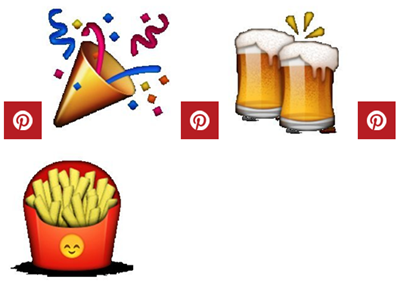
America leads the world in an assortment of categories, including meat, royalty, "female-oriented" -- which includes symbols for makeup and women's clothing -- and LGBT emojis. Oh, and the country has a particular proclivity for the eggplant icon.
美国人使用的符号类型最为多样,包括肉、皇室、“女性化”(如表示化妆、女士服装的表情符号)和同性恋类的符号。对了,美国人还对茄子图标情有独钟。
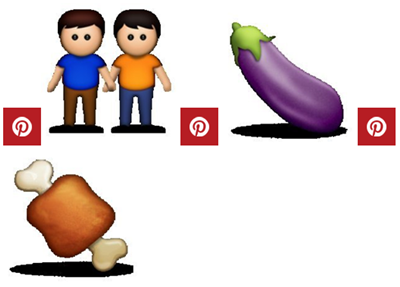
Russians opt for cold weather emojis like the snowflake, and use three times as many romantic emojis than the worldwide average. And the French? Stereotypes hold up, apparently, as they often go for hearts and wedding icons.
俄罗斯人偏爱体现寒冷天气的符号,例如雪花,而使用浪漫表情符号的频率是世界平均水平的3倍。那么法国人呢?他们经常使用心形和婚礼的符号。很明显,这个结果保持了人们一贯对法国人的印象。
Due to the vast number of emojis, usage rates for individual symbols are often quite low -- some symbols are used less than 0.5 percent of the time. Swiftkey aggregated the data from their anonymized Cloud database.
由于表情符号数量众多,使用个别符号的频率非常低。一些符号使用频率不足0.5次. Swiftkey汇总了从匿名云数据库中得到的数据。
Emoji use has been linked to such things as a more active sex life and a decline in "deep meaningful conversations." But regardless of possible side effects, we use them a lot. A 2013 survey found 74 percent of Americans and 82 percent of people in China have sent an emoji.
表情符号的使用体现出,“深入、有意义的交流”减少。不论有怎样的负面效果,我们仍旧频繁地使用这些符号。2013年的一份报告发现,74%的美国人和82%的中国人使用表情符号。
"We’ve stumbled on whole new confusing ways to communicate with each other, so we’ve been given a whole new vocabulary to say 'I’m laughing,' or 'joy,' or 'Well done,' New York magazine's Adam Sternbergh wrote in November. "This new way will not replace all the old ways, but it can augment them and help us muddle through."
《纽约杂志》的作家亚当·斯特恩伯格去年11月时写道:“新的交流方式令我们困惑,我们学得磕磕绊绊,因此一种全新的语言出现了,我们用这种语言来表达“正在大笑”、“高兴”或表扬对方“做得好”。这种方式并不能代替面对面的交流,但会辅助传统的交流方式,让我们得以蒙混过关。”


